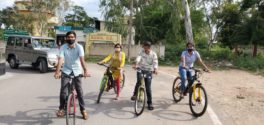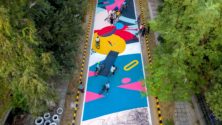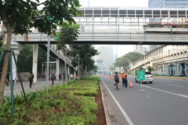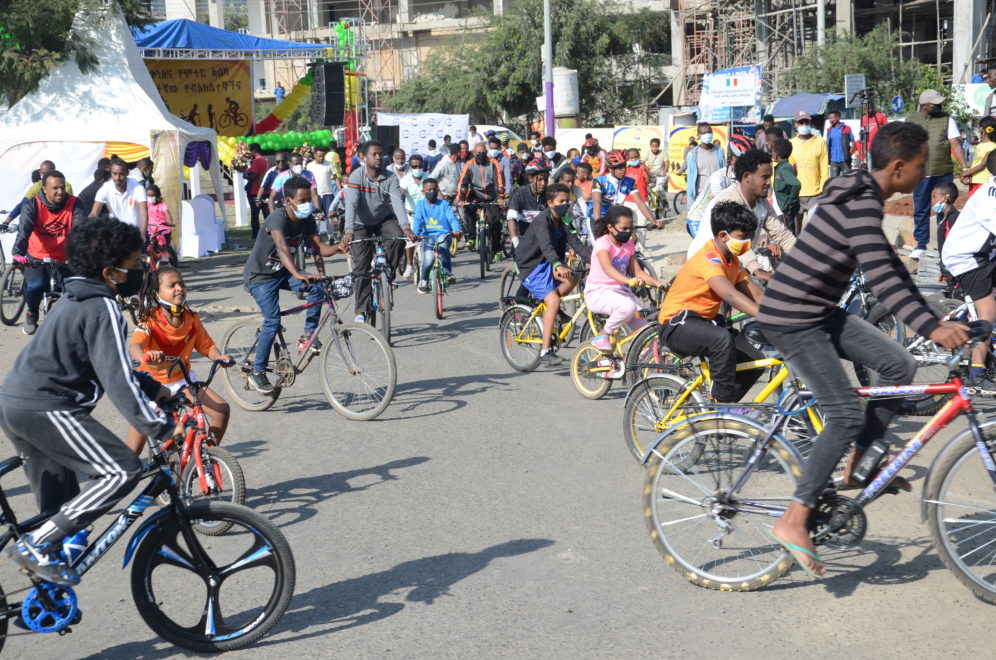
October 26, 2021
Cycling Is Booming and Not Just Where You Think
For many years, cycling has been overlooked as a viable transportation option outside of a few European cities. However, this perspective is finally starting to shift. Cities around the world—from Pune to Jakarta and Santiago to Addis Ababa—are investing heavily in cycling as they recognize its value as an important tool to improve public health, the climate, and urban access.
Worldwide, over one-third of all trips are under 5 kilometers (<20 minutes by bicycle) and over half of all trips are under 10 kilometers (<30 minutes by e-bike). If even half of these trips were made by bicycle, the world could save 300 million tonnes of CO2 per year, and $25 trillion in cumulative transport expenses by 2050.
The COVID-19 pandemic has been a boon for cycling with many people embracing it as an effective and safe means of transportation. Bicycle sales are soaring worldwide, and cities are responding by building new bicycle lanes to accommodate the influx of cyclists. In the first weeks of lockdowns, over 45 cities offered free or reduced bikeshare to essential workers. In addition, cities worldwide expanded existing cycling networks or built temporary cycling infrastructure. Cities that added temporary cycling infrastructure during the pandemic saw up to 48% more cycling trips than cities that did not add cycle lanes. The pandemic has shown that by prioritizing cycling and quickly adding low-cost infrastructure, cities can transform their streets.
WHY CYCLING
Globally, one in four adults and four out of five adolescents do not get enough physical activity, putting them at high risk for cardiovascular disease. Regular cycling reduces this risk, as well as the risk for other conditions like anxiety, diabetes, and obesity. It also expands access to jobs, schools, and other destinations by 10 times compared to walking. Cycling is zero emission travel. Like walking, it is human powered, which keeps the air clean and ultimately leads to a healthier and more equitable planet.
Better cycling infrastructure leads to more people cycling. A safe, connected network of cycle lanes dramatically improves access to destinations by expanding the coverage of public transport and helping people make trips that are too far to walk. For example, in Jakarta, bicycle lanes around Harmoni BRT station increased, by five times, the number of people who could access the station within 15 minutes.
Electric-assist bicycles can further increase the range of cycling, and diversify those who cycle by making previously physically strenuous activities easy. Delivery companies are increasingly using e-bikes instead of expensive cars and trucks that require costly maintenance and repairs, and which are much less agile on a busy city street. Major companies, including IKEA and Amazon, have invested in cargo e-bikes for deliveries in urban areas.
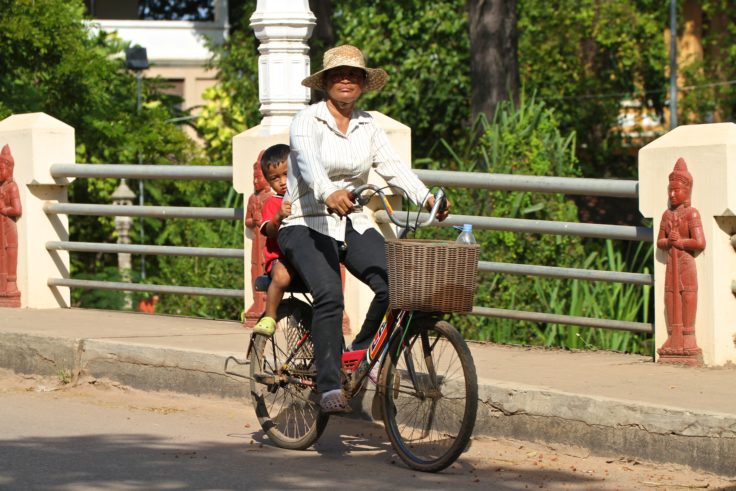
Cycling is a powerful transportation option because cities can quickly and inexpensively build the infrastructure to support it. In the last 15 years, cities have created bicycle lanes and bicycle-friendly streets using low-cost, temporary materials that can be installed and modified in a matter of hours. Using this quick-build approach, often called tactical urbanism, cities can create entire bicycle networks in a matter of weeks, while previous approaches took years. Additionally, tactical urbanism allows cities to watch how people use the infra-structure and quickly modify it as needed. Calgary, Canada, did this in 2016, installing an entire network of protected bicycle lanes across the downtown in a matter of months. While there was heavy opposition at first, once the lanes were in place, bicycle use in the downtown doubled, support grew, and the lanes became permanent. The following year, Edmonton, a nearby Canadian city, adopted the same approach with unanimous government support.
CYCLING BOOM WORLDWIDE
The car-centric model of development has left most people in polluted, congested cities that are expensive and difficult to get around. Cities are now looking to other models, and cycling is emerging around the world as an effective means of connecting people to where they need to go. While many people associate cycling with the Netherlands and China, cities in South Asia, Africa, and Latin America are planning major investments in cycling with clear benefits already becoming visible.
INDIA
Several cities in India recently invested in cycling. In 2014, Chennai adopted a walking and cycling policy that prioritized the construction of cycle infrastructure around the city to increase the use of bicycles. The policy led to the creation of the Chennai Complete Streets Design Manual in February 2020. The document creates clear guidance for the design of cycle-friendly streets in Chennai. Pune followed in 2017, adopting a Cycling Master Plan. This plan identifies nearly 300 kilometers of streets for bicycle lanes, creating a citywide network.
In 2020, the Indian government launched the Cycles4Change Challenge. Over 100 cities across the country took part and developed their own programs to improve cycling. This national program supports locally-driven projects to build safer infrastructure, including pop-up bicycle lanes, speed reduction measures, and community-led bikeshare programs. Cycles4Change is bringing tremendous visibility and excitement for cycling across the country.

ETHIOPIA
Ethiopia’s government has embraced a strategy for walking and cycling that prioritizes safety through a complete streets approach. This strategy calls for traffic calming measures to reduce speeds on smaller streets and protected bicycle infrastructure on larger streets. Addis Ababa, the largest city in, and capital of, Ethiopia, has also adopted an ambitious walking and cycling strategy, to construct 200 kilometers of protected bicycle lanes across the city by 2028. Both strategies aim for women to account for half of all people on bicycles toward the end of the decade, a strong statement for gender equity. These strategies also aim to halt the growth of car and motorcycle traffic in the city and reduce traffic injuries and deaths. Public education events, like Addis Ababa’s Car-Free Days, are helping to show people what their streets could look like if they give less space to cars. These ambitious goals will reshape Ethiopia and create a model for cycling in African cities. Other cities in East Africa—including Kigali, Rwanda, and Mombasa and Nairobi, Kenya—are also strengthening their commitments to improving cycling conditions, adopting cycle-supportive policies, and expanding priority and space on the street for cyclists.
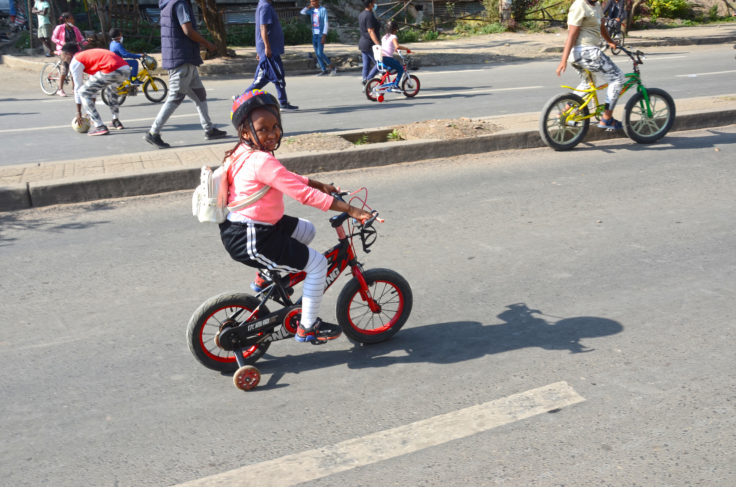
INDONESIA
While Jakarta, Indonesia, is consistently named one of the world’s most congested cities, the city has worked closely with ITDP Indonesia to implement many public transit and cycling initiatives. In 2019, the city introduced a plan to build 500 kilometers of cycle lanes, with a focus on integrating the cycling network with public transit. During the pandemic, Jakarta developed temporary cycle lanes to boost cycling.
The results were dramatic, with cycling increases seen from 50%-500% in different routes. The pop-up lanes were based on an interest in cycling promoted by community outreach and Car-Free Days that were held before the pandemic. The city went from being a difficult place to cycle to one with a large number of cyclists in a very short amount of time. Jakarta has also launched a new bikeshare program, which expands access to bicycles for all. ITDP Indonesia is currently working with the city to make it easier for people to use bikeshare as a first-last mile solution, piloting wayfinding signage, and improving connections between public transit and bikeshare stations.
LATIN AMERICA
During the pandemic, cities in Latin America embarked on some of the most extensive expansions of cycleways. Bogotá added nearly 80 kilometers to its 550 kilometers bicycle network along the Transmilenio pathway by converting car lanes on wide streets into bicycle lanes. Much of this expansion occurred in a matter of hours, often literally overnight. Because the lanes used temporary materials, the city could quickly change the lanes as necessary. According to advocates and practitioners, the network was modified three times in three days as different locations were tried and amended. This type of experimentation allows for cities to make modifications on the fly, leading to a long-term, more successful cycle lane network.
BUILDING ON THE MOMENTUM
The momentum for better cycling is growing in cities around the world. To build on this, ITDP has launched a global campaign, Cycling Cities. This global campaign provides governments, planners, advocates, and others the tools to make cycling a safe and affordable transportation option in cities. Through the Cycling Cities campaign, ITDP will work with cities to redesign streets permanently and adopt key policies to support cycling, so that 25 million more people live near safe cycle lanes by 2025.
Sign our campaign pledge at cyclingcities.itdp.org to grow cycling in your city and build a healthier, safer, and more equitable planet!

